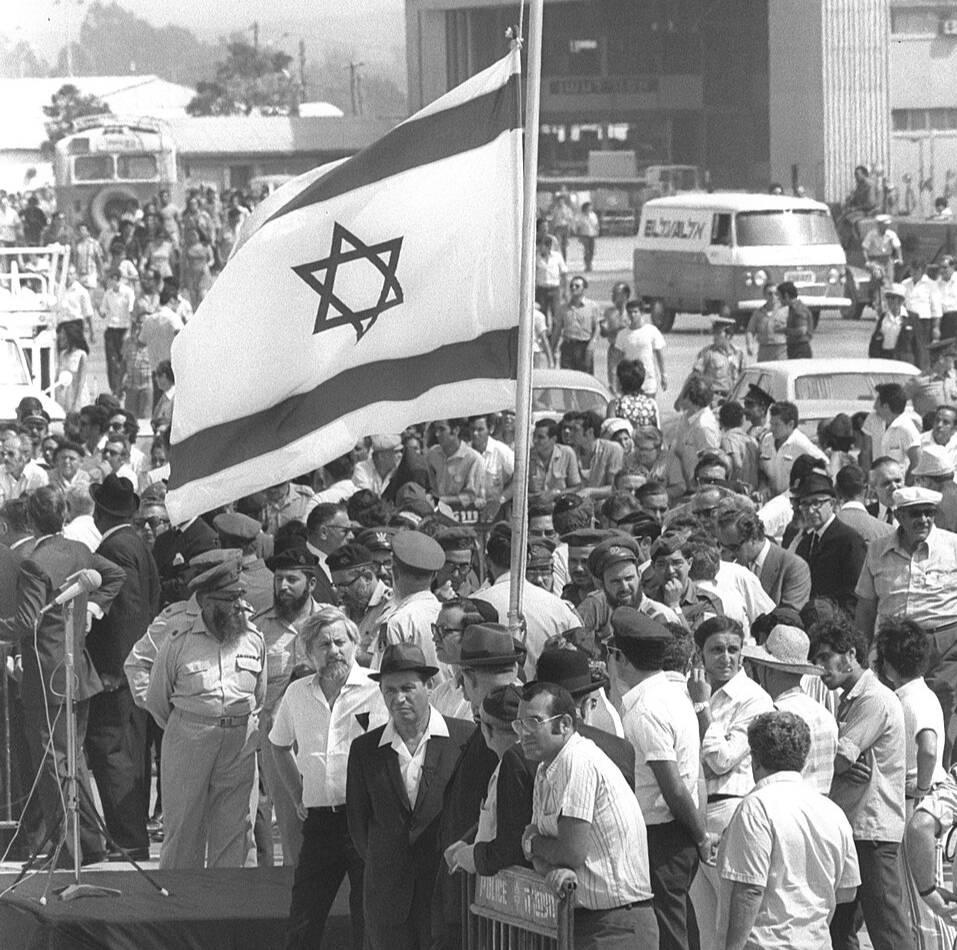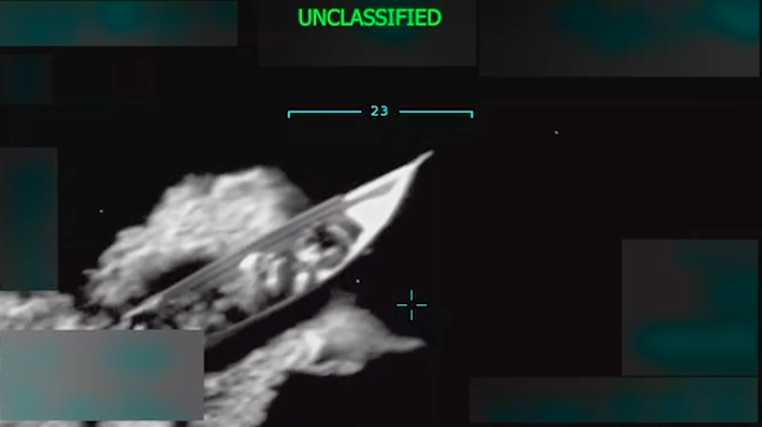The Assassins and Their Allies: How Europe Helped Israel Hunt the Munich Killers
A review of Aviva Guttmann, “Operation Wrath of God: The Secret History of European Intelligence and Mossad’s Assassination Campaign” (Cambridge University Press, 2025)

Published by The Lawfare Institute
in Cooperation With

Operation “Wrath of God,” the Israeli intelligence campaign of targeted assassinations carried out in response to the 1972 Munich Olympics massacre, is both a reminder of the lengths Israel will go to in its fight against Palestinian terrorism and a relic of a bygone era when Israel was highly sensitive to the risk to innocent life in its operations. In her impressive history of Israel’s campaign, Aberystwyth University professor Aviva Guttmann chronicles the Israeli operations, the Palestinian response, and, especially, the intelligence cooperation among Israel and European states that facilitated the killings.
The 1972 Munich Olympics were a watershed moment in the history of international terrorism. The Black September organization took advantage of lax security at the Olympics, with eight of its members entering the Olympic Village, killing two Israeli athletes, and taking another nine Israeli athletes and coaches hostage, using them to demand the release of Palestinian prisoners held in Israel—all in full view of world media, which had gathered to cover the games. Black September was a spinoff of Yasir Arafat’s Fatah, allowing Arafat to claim he was not involved in international terrorism while allowing his group, and the Palestinian cause, to gain attention and recruits from the attacks.
The crisis ended in tragedy when a botched German rescue attempt at the Fürstenfeldbruck Air Base resulted in the deaths of all 11 hostages, five of the eight terrorists, and a German police officer. The massacre grabbed world attention, putting the Palestinian cause on newspaper front pages and, especially, television sets around the world. At the same time, it led to international condemnation of terrorism, and prompted major changes in security policy, including the creation of elite counterterrorism units and new global standards for event and aviation security. Equally consequentially, as Guttmann lays out, it also led to greater international intelligence cooperation against terrorism in general and Palestinian terrorism in particular.
In response to the massacre, Israeli Prime Minister Golda Meir authorized an assassination campaign to kill members of Fatah and Black September involved in the attacks, both in Europe and in the Middle East. Guttmann’s book focuses on the European elements of the Israeli campaign, but she notes Israel also conducted daring attacks in the Middle East such as Operation Spring of Youth in 1973, an Israeli commando raid carried out in Beirut and Sidon, Lebanon that successfully targeted several senior Palestine Liberation Organization (PLO) leaders.
Guttmann provides a detailed account of the Mossad killings in Europe, focusing on the 1972-1973 period, when most of the assassinations occurred. To do this, she mines heretofore untapped archives from the Club de Berne, an intelligence-sharing network maintained by eight Western European countries, which also had liaisons with other intelligence agencies, notably the FBI, the Mossad, and the Shin Bet, Israel’s domestic security service. After the massacre, club members created a special channel, “Kilowatt,” that focused on Palestinian terrorism in Europe. For Israel, the intelligence gleaned from Kilowatt proved vital to its efforts to combat Palestinian terrorist groups, which had been able to operate in Europe with considerable freedom. Guttman notes that before the Munich attack, “Israeli agencies had almost no intelligence on Palestinian terrorism in Europe.”
Guttman argues that Israel had three goals for “Wrath of God.” The first was simply revenge, a sentiment shared by both Meir and the Israeli public. Second, Israel sought to disrupt ongoing terrorist plots: The same financiers, planners, and logisticians who enabled the Olympics attack were planning other attacks. Third, Israel sought to deter future terrorism by sending a message that, eventually, those involved in terrorism would pay with their lives.
“Operation Wrath of God” makes clear that Israel largely achieved the first and second goals. One of the most interesting findings in the book is the number of plots that Palestinian terrorists planned in Europe against Israeli and Jewish targets (the terrorists seemed to consider the two identical) that European counterterrorism and Israeli operations disrupted. These included a 1973 attempt to use a surface-to-air missile to destroy Meir’s plane when she was coming to Italy to meet with the Pope. In addition, Palestinian operatives often tried to avoid appearing in public and reduced their operational activities to avoid Mossad attacks, whether planned or simply feared.
Whether “Wrath of God” deterred terrorism is difficult to prove either way, but the evidence seems against it. Black September carried out various reprisals in response to the Israeli campaign, including the 1973 murder of Vittorio Olivares, an Italian Jewish employee of the El Al office in Rome whom Black September members thought was a Mossad operative. Although Fatah did disband Black September and reintegrate its operatives into Fatah, it did so largely because it believed that spectacular international terrorist attacks had already achieved what they could and that further attacks were damaging the reputation of the cause and hindering state support with little benefit. After this period, it was largely other groups, not Fatah, that conducted high-profile international attacks.
One of Guttmann’s themes is the blindness, usually willful, of club members with regard to Israeli activities. European intelligence services shared information through the Kilowatt channel both about suspected Palestinian terrorists and about their unidentified assassins, who were Mossad operatives. Israel learned from both: It used the former intelligence to target Palestinians for assassination and the latter intelligence to track European follow-on investigations to evade capture and improve its techniques for the next round of attacks. Over time, Israel’s role in the killings became clearer and clearer, but the intelligence-sharing continued, suggesting both the concerns that European states had about terrorism on their soil and their quiet support for Israel’s operations. (The European hypocrisy involved more than allowing their intelligence to be exploited by Israel; a number of governments also made deals with Palestinian terrorists to avoid being targeted.)
“Operation Wrath of God” provides highly useful supplements to other works that cover the assassination campaign, such as Simon Reeve’s “One Day in September” and Ronen Bergman’s “Rise and Kill First.” The additional evidence from the Club de Berne explains why the Mossad targeted some people previously believed to have had only marginal connections to Palestinian terrorism. The operation’s first victim, Wael Zwaiter, the PLO representative in Rome who was also a poet and a part-time translator, is shown to have provided instructions and weapons to the Munich attackers.
Guttman’s work also offers many insights into the more mundane parts of both terrorism and counterterrorism. Club de Berne files, for example, contain a to-do checklist for one Black September member, including items such as acquiring passports, leasing a safe house, and obtaining money—an important reminder that the highly visible, violent part of terrorism relies heavily on money and organization. Even more importantly, “Operation Wrath of God” explains the ins and outs of multilateral intelligence cooperation, an exceptionally difficult topic to research. As a result, through Guttmann’s careful research we learn how small details come together, such as in the killing of Mohamed Boudia, a terrorist targeted by a bomb in his car in Paris. Boudia took numerous precautions, and his car was not in his real name—but information from Swiss intelligence via Kilowatt revealed his cover, enabling the Mossad to kill him.
“Wrath of God’s” operational requirements, however, show an Israel far more concerned about civilian casualties than it is today. Guttmann writes that “Golda Meir’s standard remained that no innocent bystanders whatsoever were to be hurt.” This meant that shootings had to be precise and bombs had to be small so as not to kill people in neighboring apartments, a standard that seems quaint when examining Israel’s operations after Oct. 7 and their high civilian death toll. Indeed, the operation mostly ended in Europe in 1973, when Mossad operatives gunned down an innocent Moroccan waiter in Lillehammer, Norway, believing he was a senior Black September operative. Not only was an innocent person killed, but the operatives were quickly arrested and Israel’s role revealed.
Guttmann’s book has some limits, and some of her conclusions need more caveats. For non-academic readers expecting more of a spy thriller, the dry tone and blow-by-blow quality of some of the narrative may prove a turnoff. At times Guttman downplays academic work on how common intelligence cooperation is among states. Most importantly, she does not discuss the limits of her own sources. Despite the tremendous value of the Club de Berne files and what the Mossad got out of them, a lot of information almost certainly came from other sources. Key intelligence collectors such as the CIA, the National Security Agency, and the U.K. Government Communications Headquarters, were not part of the Club de Berne and would not have shared their information in a potentially insecure multilateral forum. More discussion of other possible sources of information and what was not shared via Kilowatt would be of interest to readers interested in counterterrorism intelligence.
In the end, “Operation Wrath of God” stands as both a rich work of archival recovery and a sober study of counterterrorism’s operational complexities. Guttmann reconstructs with precision the interplay of vengeance, deterrence, and cooperation that defined Israel’s shadow war in Europe, providing a detailed picture of a campaign born of rage and necessity. Her account reveals not only the intelligence scaffolding that made such operations possible but also the ethical boundaries Israel once tried—however imperfectly—to uphold. In doing so, Guttmann invites readers to reconsider how democracies fight terror: through law and coordination, or through quiet violence that exacts its own enduring costs.




